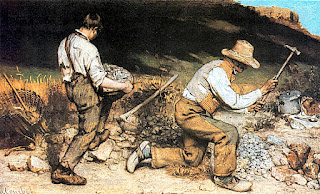Non-Western Blog
Non-Western Blog
Title: Huichol Indian Sacred Tree of Life
Artist: Andrew Osta
Yarn Painting on Panel
The reason I chose this piece is because it’s amazing and I could not quit looking at it. When looking at this particular piece it is the plant of life, peyote plant and only this exact plant could enhance divine relations with Huichol gods. It carries several colors of blue, red, yellowish green and white and many times represented as ear of corn in its original form. The significance of colors also came to light and runs the same way until today’s current Huichol art. Orange symbolizes their sacred land where all life began according to the Huichol. Yellow is used during ceremonies for face painting and comes from a root that grows in Wirikuta. Green is growth, young into men, grandfathers, the heart, healing, the heavens, and the earth. Blue signifies femininity, rain, water, Pacific Ocean, and the South and finally, red signifies masculinity, fire, and the East while white signifies the cloud spirits.
English: Huichol beadwork woman mask
Tepotzotlan, Mexico State
Date: 13 September 2009
After learning about the yarn painting, I was immediately attracted to this bright brilliant beadwork. The rugged mountains of the Sierra de Nayarit north of Guadalajara are the homeland of Huichol Indians, who are the brilliant artists behind these beautiful pieces of work. The process of making these masks or animal shapes is first, each piece is made first by spreading a thin layer of beeswax over a wooden form or hollowed gourd. Once that in rubbed evenly all over the wooden object then they meticulously push small glass beads into the wax to create complex patterns and symbols. Every bead has been selected by hand to ensure the highest possible quality and make sure it’s perfect. The unifying factor of the work is the colorful decoration using symbols and designs which date back centuries. I’m not sure if I would ever buy one to own but I am definitely thinking about making one myself.
Dog Sled With Team of Thirteen Dogs
Artist: Mary Seppilu
Made from: Walrus tusk, fossil walrus ivory, walrus tooth, sealskin, and baleen.
6”h x 3.5” w x 27.25” l
Mary is a Yupik carver from St. Lawrence Island in Alaska. She created this imaginatively carved dog musher and his team of thirteen dogs atop this magnificent walrus ivory tusk. Fossilized ivory ranges in color from cream through buff and brown to dark green, blue, and even black. Mary carved each dog from a unique piece of fossil ivory adding individual personality to every single dog. Awesome fact, no two carvings will have the same design or color. The carved walrus teeth hang from baleen rails on either side and the back of the sled. Alaska Native carvings of animals, hunters, and ceremonial masks, as well as other contemporary and traditional artwork, incorporate Alaskan ivory to enhance the beauty and value of the work. Most ivory carvers used similar tools like an ax or chisel for removing the outer bark, or rind, from the tusk; a bucksaw or bow saw for cutting the trunk of the tusk into sections. Then a special tool called a float for paring the surface; and hand chisels, fretsaws, and gauges for actually carving the piece. Chunks of ivory are found lying on the ground or beach or buried in frozen ground, then that causes the color of walrus ivory to change. I would gladly have an ivory dog team in my showcase!
Artist: Ellen Henry of Venetie, Alaska,
Alaskan Athabascan beaded flowers onto moosehide mittens with beaver fur trim.
These wonderful Athabascan mittens are covered with pink wild rose petals made of beads. They're embellished with symbols of both winter and summer: White, curled butterfly antennas and the waddling tracks made by little wild birds as they cross the dry winter snowfields near rural villages. Ellen Henry died in 2008, at the age of 95. Ellen had 12 children, with that came a lot of beading and sewing. Native people raise their children with a deep respect for the land. The same amount of respect that we have for land also transfers to how we work, bead, or sew, hunt, and parent. Most of the homemade items like the krupuk's (a traditional pullover shirt or coat). Mukluks and slipper tops are sometimes made with symbols of the mountains, flowers, snow, and animals found in the environment. When you're looking at Athabascan beadwork, it's just like you can feel the spirit by the design you’re looking at. It usually describes the owner. I do own a pair of these, and I also make them!
Cites:
Ivory Carving in Alaska. Ivory Carving in Alaska. https://www.arcticspiritgallery.com/
http://huicholartonline.com







It is interesting to see how different tribes use the resources of their lands to create these works of art. The last 2 pieces you selected; the walrus carving and beadwork mittens are examples of Alaska Native art, the walrus carving of the Yupik peoples and the mittens Athabascan. I couldn't tell where the first piece is from, 'Huichol Indian Sacred Tree of Life', but I enjoy its symmetry and the bright pop of colors. The Huichol mask mimics this use of color and pattern. Thank you for your post.
ReplyDelete